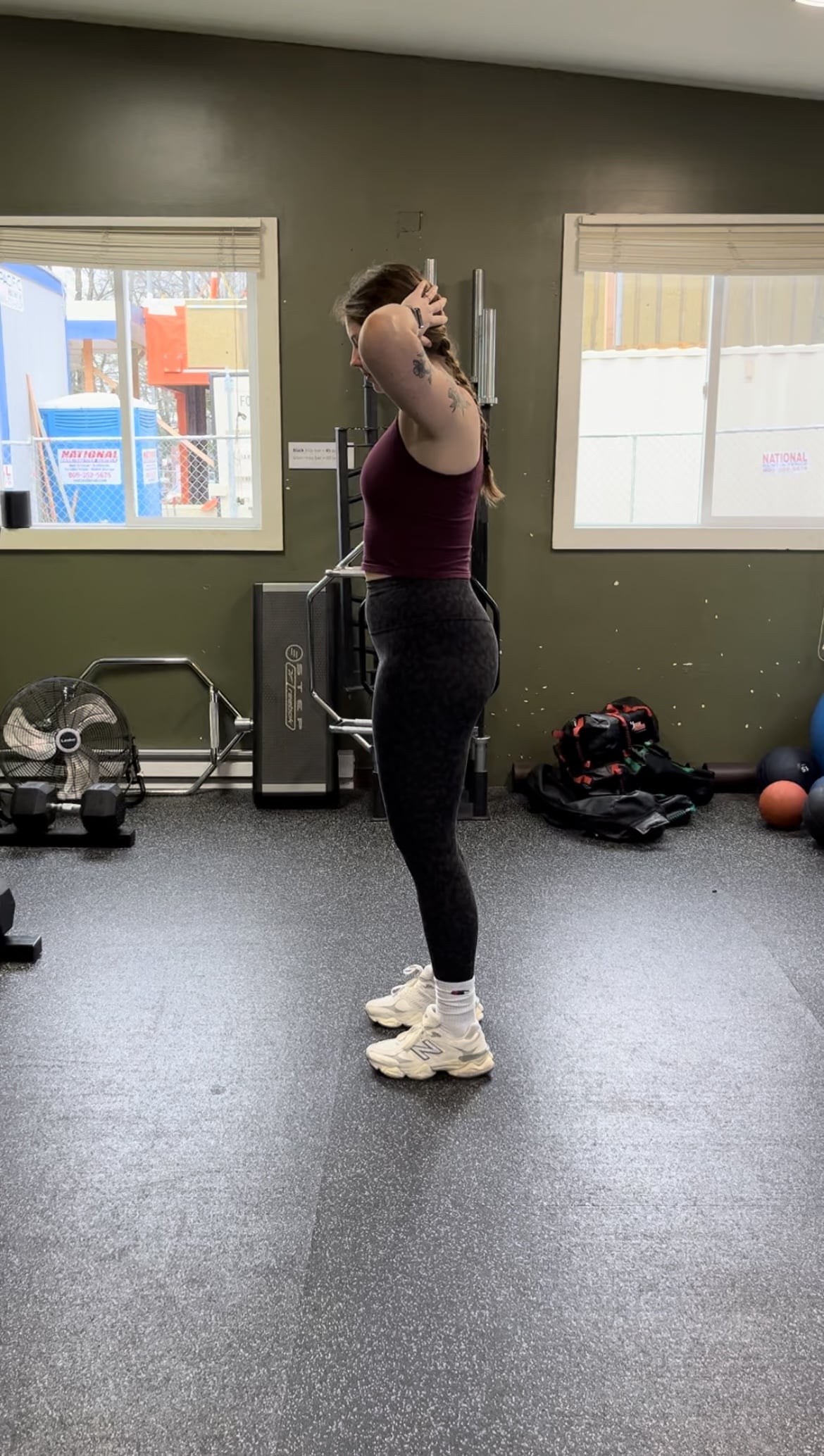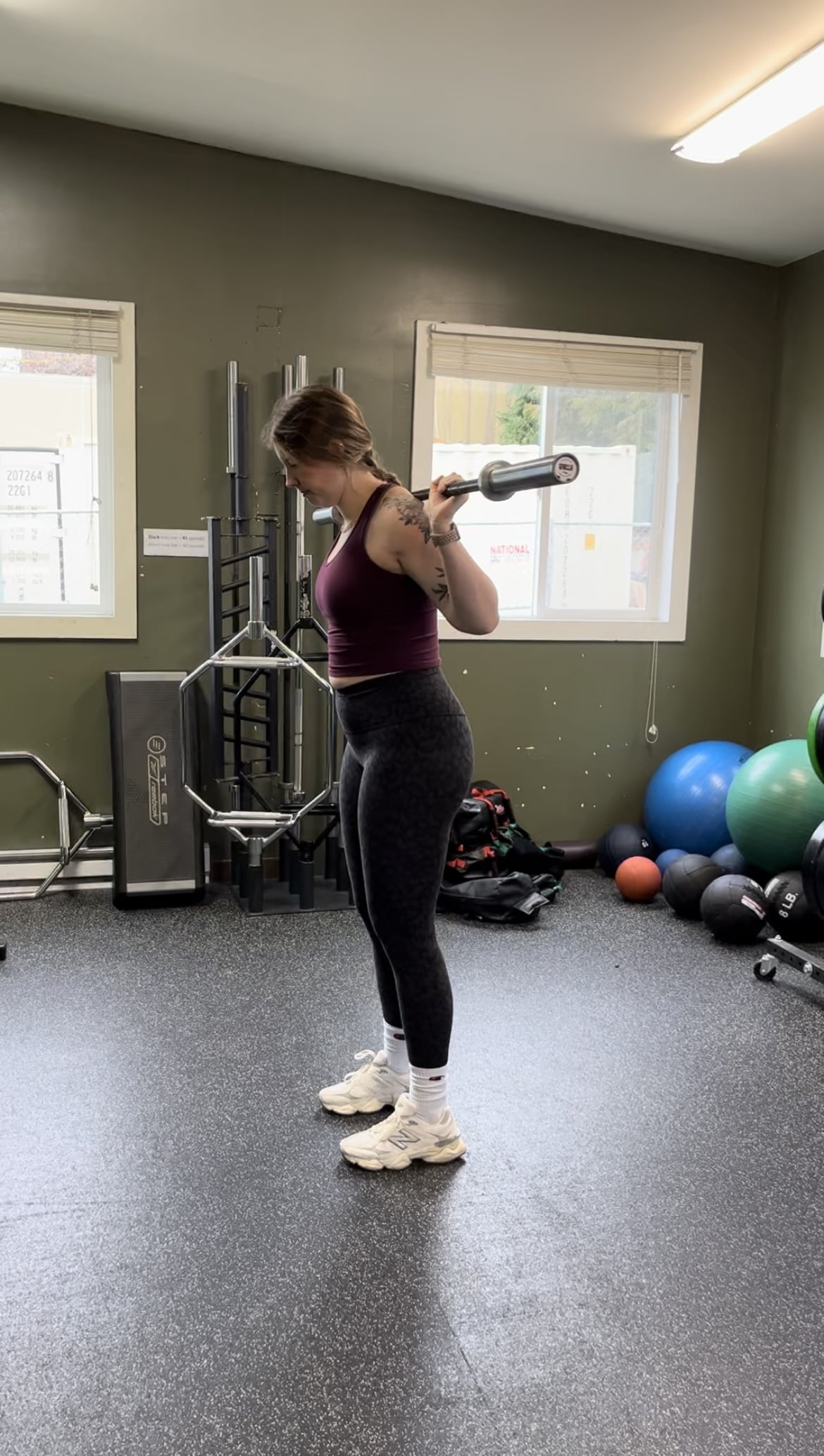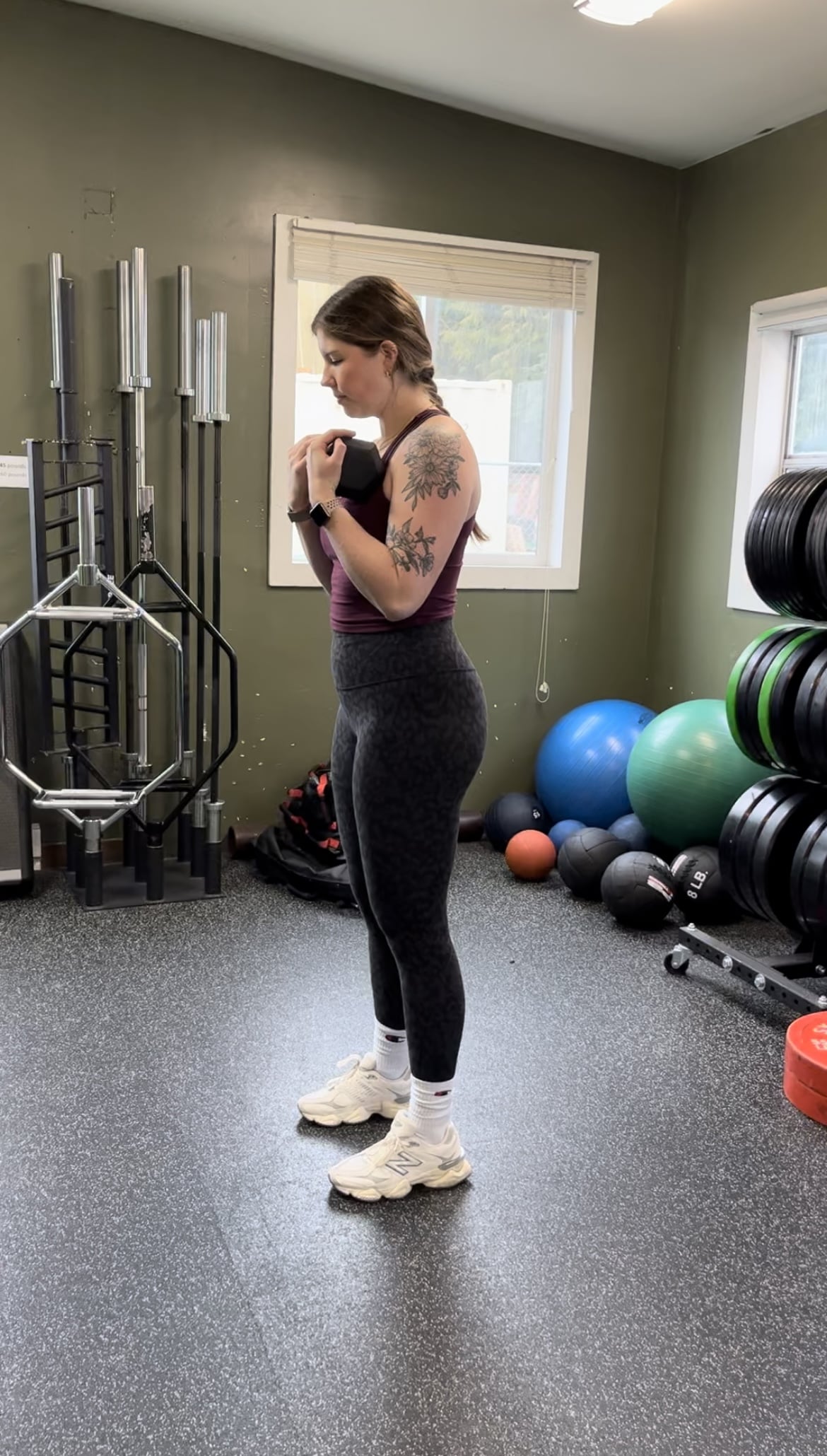Products You May Like
When it comes to lower-body workouts, deadlifts get a lot of attention. But they have a lesser-known cousin that delivers many of the same benefits, with the added advantage of needing less weight to effectively strengthen your muscles: the good-morning exercise.
The good morning is a lower-body hip-hinge exercise that primarily strengthens your posterior chain, i.e. the muscles on the backside of your body, says Natalie Ribble, MS, CSCS, CFSC, a strength and conditioning specialist and functional strength coach in Seattle. Essentially, you’ll hinge forward at the hips, sending your hips backward and bringing your chest forward and parallel with the ground, she explains.
It’s a movement pattern that’s pretty similar to the Romanian deadlift. The main difference is where the weight is being held. In the deadlift variation, the weight is in your hands and held close to your center of mass, which means you can use a pretty heavy load. With a barbell good morning, the bar sits on your rear deltoids, like a barbell back squat. “Because it’s a little farther from your center of mass and farther from the hinge point, it basically is a longer lever arm, and so you can get more tension on your muscles and more force output with less total weight,” Ribble explains. Translation: you won’t need to add multiple weight plates to make notable strength gains. In fact, even bodyweight good mornings can leave you feeling sore the next day.
Though the exercise itself looks easy, certified fitness coaches like myself and Ribble know that the hip hinge is one of the movement patterns people struggle with most. It can be instinctive for exercise newbies to bend at the back rather than the hips, which ups the risk of injury. That’s why we put together an easy-to-follow step-by-step guide to doing good mornings correctly, whether you’re working with a barbell, a dumbbell, or your bodyweight — plus info on what perks you’ll enjoy from adding the exercise to your lower-body workouts.
Good-Morning Benefits
Is the good-morning exercise worth it? Yes — not just because it strengthens muscles on its own, but also because it’s an excellent companion move. Do a few reps of the good morning, and you’ll instantly know whether or not you’re performing a hip hinge properly while doing deadlifts, bent-over rows, and kettlebell swings.
As you move through the exercise, your hips should travel backward in a horizontal path, and your chest should lower toward the floor as a result; you’re not tipping your chest forward and keeping your hips still.
Filming yourself as you do the good morning and reviewing your reps can help you perfect your form, but paying attention to your body is also key. If you perform the move without hinging at your hips, “you will heavily, heavily feel it in your lower back in a less-than-ideal way most likely,” Ribble says.
In practicing proper good-morning form, you’ll reinforce thoracic extension — a flat-back, neutral-spine position — and ensure your back isn’t rounding during deadlifts and squats, she says. That flat back will come to be second nature when loading the dishwasher, picking up a laundry basket, and lifting your cat up from the floor, too.
Good mornings can also help you warm up before heavy squats or deadlifts. A few light sets of 10 to 12 good mornings will get your glutes and hamstrings primed and ready for the tough workout to come, Ribble says. Or you can use good mornings as an accessory movement, an exercise you perform on the days you aren’t doing deadlifts and squats to further build strength in those movements.
There’s no shortage of variations, either. Use a safety bar instead of a barbell or use a sandbag instead of a dumbbell if that’s the equipment available to you. Step one foot back into a little kickstand for some unilateral training, Ribble says. Or perform a bodyweight or lightly loaded good morning while seated to concentrate on the back and ease the workload of the hamstrings.
What Muscles Does the Good Morning Work?
The good morning targets the muscles in your posterior chain, predominantly the hamstrings and glutes. Your erector spinae muscles also come into play; these sit on either side of your spine and help support it as you stand up straight from a bent-over position, Ribble says. In fact, as long as you’re performing the move correctly, your entire core should be working. Remember: the core is a group of muscles (including the erector spinae) within your trunk that work together to protect and stabilize your spine, help you stand upright as you move, and transfer force between your lower and upper extremities.
How to Do a Good Morning With Your Bodyweight
A bodyweight good morning is the best variation to start with if you’re a beginner. You could either go equipment-free or use a PVC pipe or mobility stick to give you the feel of a barbell without the weight. These tools can help you remember to keep your chest lifted and maintain thoracic extension, Ribble says. You can also perform the movement with your backside a few inches away from a wall so that when you hinge forward and send your hips backward, your butt taps the wall, she suggests.


- Stand with your feet hip-width apart, your toes pointed forward, and your hands clasped gently behind your head. Press all four corners of your feet into the floor and engage your core by bracing as if someone is about to punch you in the gut.
- On an inhale, slowly hinge forward to send your hips straight back behind you, allowing your chest to travel toward the floor in front of you and your knees to bend slightly. Keep your toes glued to the floor, core engaged, and spine neutral, preventing your back from rounding.
- Continue hinging until you feel a stretch in your hamstrings and you’ve hinged as far as your hip mobility allows.
- On an exhale, reverse the movement: shoot your hips forward, allowing your chest to rise and knees to straighten, and return to the starting position. That’s one rep.
Do 10 to 12 reps.
How to Do a Good Morning With a Barbell
When transitioning to a weighted good morning, don’t go too heavy right out of the gate. Remember, the exercise creates a lot of tension in the muscles without much load, Ribble says. You’ll also want to make sure you’re using only the range of motion you can create with your hips, glutes, and hamstrings; avoid bending from the lower back. If you feel tension or straining in your lower back, take it as a sign to drop down to a lighter weight.


- Stand with your feet hip-width apart, your toes pointed forward, and a barbell resting on your upper back, across your rear deltoids, with your palms facing forward. Press all four corners of your feet into the floor and engage your core by bracing as if someone is about to punch you in the gut.
- On an inhale, slowly hinge forward to send your hips straight back behind you, allowing your chest to travel toward the floor in front of you and your knees to bend slightly. Keep your toes glued to the floor, core engaged, and spine neutral, preventing your back from rounding.
- Continue hinging until you feel a stretch in your hamstrings and you’ve hinged as far as your hip mobility allows.
- On an exhale, reverse the movement: shoot your hips forward, allowing your chest to rise and knees to straighten, and return to the starting position. That’s one rep.
Do 10 to 12 reps.
How to Do a Good Morning With a Dumbbell
Don’t have access to a barbell? Don’t fret. You can also perform a weighted good morning with a single dumbbell. Just hold it tight against your chest and choose a load that doesn’t cause you to lose that thoracic extension.


- Stand with your feet hip-width apart and your toes pointed forward, holding a dumbbell against your chest with both hands. Press all four corners of your feet into the floor and engage your core by bracing as if someone is about to punch you in the gut.
- On an inhale, slowly hinge forward to send your hips straight back behind you, allowing your chest to travel toward the floor in front of you and your knees to bend slightly. Keep your toes glued to the floor, core engaged, and spine neutral, preventing your back from rounding.
- Continue hinging until you feel a stretch in your hamstrings and you’ve hinged as far as your hip mobility allows.
- On an exhale, reverse the movement: shoot your hips forward, allowing your chest to rise and knees to straighten, and return to the starting position. That’s one rep.
Do 10 to 12 reps.
Megan Falk is an experienced health and wellness journalist and editor whose work has been published by POPSUGAR, Shape, Livestrong, Women’s Health, Well+Good, mindbodygreen, Wide Open Spaces, and other outlets. She has served as an editor on Equinox’s content team and at Shape, where she primarily covered exercise tips, fitness modalities, workout trends, and more. Megan is also a certified personal trainer through the American Council on Exercise.
Image Source: POPSUGAR Photography / Megan Falk
